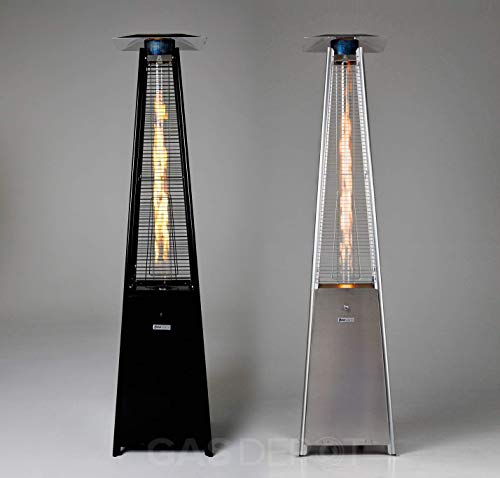12 Stats About Patio Heating Systems To Make You Think Smarter About Other People

Patio Heating Systems: A Comprehensive Guide
As outdoor living spaces progress into extensions of our homes, developing a comfy and welcoming environment is critical. One of the most efficient methods to achieve this convenience is by executing patio heater. These systems allow families and pals to enjoy their outdoor spaces year-round, no matter the chill of the night air. This post will explore numerous patio heating systems readily available, their functions, advantages, and important considerations for selecting the best one.
Kinds Of Patio Heating Systems
Patio heater come in various forms, each with its own distinct characteristics. Below are a few of the most common types:
| Type | Description | Pros | Cons |
|---|---|---|---|
| Electric Patio Heaters | These heaters run using electricity and come in wall-mounted, portable, and freestanding designs. | Easy to install and utilize; immediate heat; safe; low maintenance | Restricted heat range; may increase electricity bill |
| Gas Patio Heaters | Generally powered by propane or natural gas, gas patio heaters supply substantial heat output and can cover large areas. | High heat output; can last longer than electrical models; suitable for huge events | Requires gas supply; can be less portable; security worry about gas leaks |
| Infrared Heaters | Infrared heaters produce thermal radiation that straight warms items and people instead of the surrounding air. | Efficient; immediate heat; very little heat loss; environmentally friendly options readily available | Minimal location of effect; preliminary expense might be high |
| Fire Pits | Typically made from stone or metal, fire pits supply warmth and ambiance, developing a relaxing environment. | Natural ambiance; versatile (cooking alternative); gather around for social interactions | Security threats with open flame; need wood or propane supply |
| Patio Umbrellas with Heaters | These are umbrellas fitted with integrated heating elements, best for shaded areas. | Practical; combines shade and heating; portable | Less reliable in windy conditions; limited area; can be expensive |
Key Features to Consider
When choosing a patio heating unit, it is vital to examine different functions based upon individual choices, budget plan, and outdoor space requirements. Here are some elements to consider:
- Heating Capacity: Measured in BTUs (British Thermal Units), this identifies the heat output of the heater. Select a heater with adequate BTUs for your outdoor size.
- Fuel Type: Decide between electric, gas, or wood-burning options based upon benefit, availability, and effectiveness.
- Portability: If movement is essential, try to find lightweight or wheeled models for easy transportation.
- Maintenance: Consider the upkeep needed for each type. Electric heaters usually need less upkeep than gas or wood options.
- Security Features: Look for systems with safety cut-offs, protective screens, and products that can stand up to outdoor conditions.
Benefits of Patio Heating Systems
Patio heater provide a number of benefits, making it possible for property owners to maximize using their outdoor living locations. Some benefits include:
- Extended Outdoor Use: Heaters permit more time spent outside, even throughout cooler seasons.
- Increased Comfort: Provide a warm and inviting environment for gatherings, celebrations, or peaceful nights.
- Improved Aesthetics: Many heater designs include a stylish touch to outdoor decor.
- Increased Property Value: Homes with fully equipped outdoor spaces may draw in greater value and appeal to prospective buyers.
- Versatile Options: With numerous design and styles readily available, there is a heating option for every sort of outdoor setting.
FAQs About Patio Heating Systems
1. Just how much does it cost to operate a patio heater?
- Electric Models: This depends on the regional electricity rates and use time. On average, running an electrical heater can cost in between ₤ 0.10 to ₤ 0.50 per hour.
- Gas Models: Propane costs differ, however a 20-pound tank usually lasts about 8-10 hours, costing around ₤ 20-₤ 30 to fill.
2. Are patio heaters safe to use?
Many modern patio heaters are developed with security functions. However, it's necessary to follow safety protocols, such as sticking to clearances from combustible things, utilizing on stable surface areas, and making sure correct ventilation for gas designs.
3. Do patio heaters operate in windy conditions?
The majority of patio heaters can supply warmth in light winds, however strong gusts can decrease their efficiency and security. For high-wind locations, think about more steady designs or use wind guards.
4. Can I use a patio heater indoors?
Utilizing outdoor heaters inside your home is not suggested due to carbon monoxide gas dangers, especially with gas heaters. Constantly verify your heater's desired usage standards before installation.
5. How do I keep my patio heating unit?
Routine upkeep is important to guarantee longevity and performance:
- For electric heaters, check and clean up the heating element regularly.
- Gas heaters ought to have their gas lines checked for leaks and filters cleaned up.
- Fire pits must be cleaned up after use and checked for any residue or ash accumulation.
Patio heating systems play a crucial role in transforming outdoor spaces into comfy and inviting environments. With a variety of options, each with unique benefits and functions, house owners can choose the best system based on their needs, preferences, and specific outdoor conditions. By investing in a trusted patio heater, one can optimize satisfaction of their outdoor space throughout the year. Whether hosting summer season barbecues or cozying up on cool nights, a warmed patio welcomes togetherness, relaxation, and pleasure, making it a valuable addition to any home.

